Flamingo, Greater Flamingo, Flamingo-comum, Flamenco Común
Spotted in the Alentejo region of Portugal. Flamingo sound
Flamingos or flamingoes are gregarious wading birds in the genus Phoenicopterus, the only genus in the family Phoenicopteridae. There are four flamingo species in the Americas and two species in the Old World.
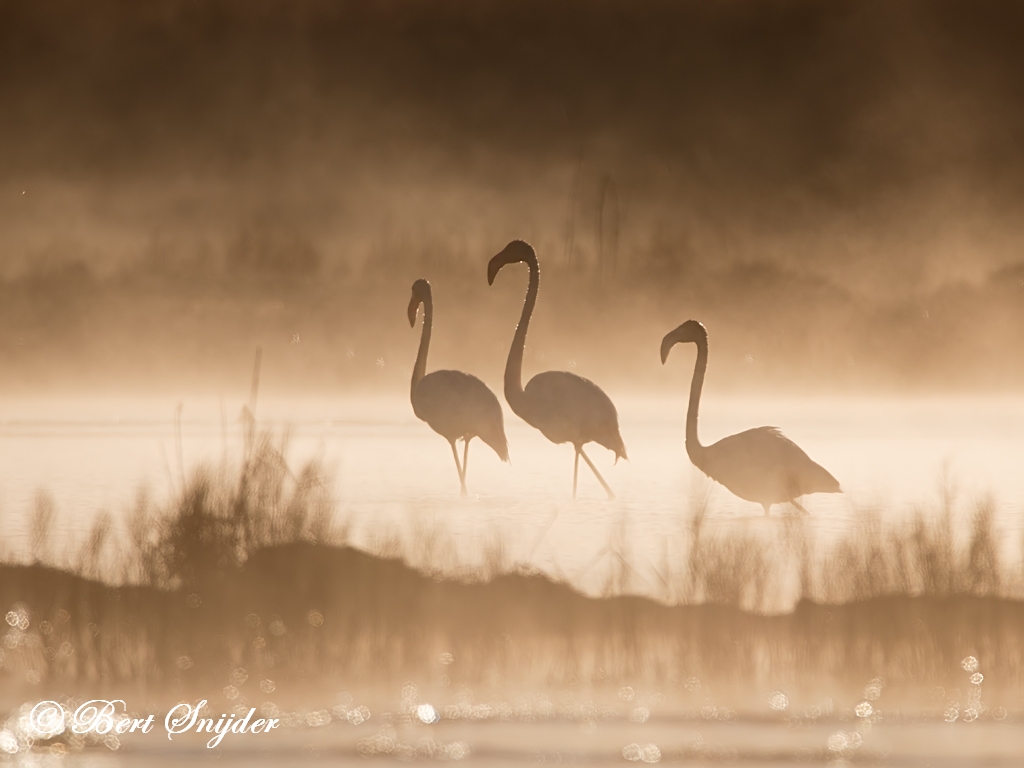
More photos at the bottom of this page:
Six flamingo species are recognised by most sources, and these are generally placed in one genus. Two species, the Andean and the James’s Flamingo, are often placed in the genus Phoenicoparrus instead of Phoenicopterus.
The identity of the closest relatives of the flamingos is a rather contentious issue. A wide variety of birds have been proposed as their closest relatives, on a wide variety of evidence. To reflect the uncertainty about this matter, flamingos are generally placed in their own order. Recent molecular and anatomical studies have suggested a relation with grebes.
Traditionally, the long-legged Ciconiiformes, probably a paraphyletic assemblage, have been considered the flamingos’ closest relatives and the family was included in the order. Usually the ibises and spoonbills of the Threskiornithidae were considered their closest relatives within this order. Earlier genetic studies, such as those of Charles Sibley and colleagues, also supported this relationship. Relationships to the waterfowl were considered as well, especially as flamingos and waterfowl are parasitized by feather lice of the genus Anaticola, which are otherwise exclusively found on ducks and geese. Other scientists proposed flamingos as waders most closely related to the stilts and avocets. The peculiar presbyornithids were used to argue for a close relationship between flamingos, waterfowl, and waders, but they are now known to be unequivocal waterfowl with a peculiarly derived morphology paralleling waders and flamingos.
Genetic studies since 2004 have identified a major clade of birds, which has been named the Metaves. This group includes flamingos and grebes, as well as the hoatzin, pigeons, hummingbirds, and the sunbittern. Most of these groups have been difficult to place on the family tree of birds. Relations within this group are somewhat unclear, and it has been suggested that this clade is based on molecular convergence.
Morphological evidence also strongly supports a relationship between flamingos and grebes. They hold at least eleven morphological traits in common, which are not found on other birds. Many of these characteristics have been previously identified on flamingos, but not on grebes. The fossil Palaelodids can be considered evolutionarily, and ecologically, intermediate between flamingos and grebes.
Flamingos often stand on one leg, the other tucked beneath the body. The reason for this behavior is not fully understood. Some suggest that the flamingo, like some other animals, has the ability to have half of its body go into a state of sleep, and when one side is rested, the flamingo will swap legs and then let the other half sleep,[citation needed] but this has not been proven. Recent research has indicated that standing on one leg may allow the birds to conserve more body heat, given that they spend a significant amount of time wading in cold water. As well as standing in the water, flamingos may stamp their webbed feet in the mud to stir up food from the bottom.
Young flamingos hatch with grey plumage, but adults range from light pink to bright red due to aqueous bacteria and beta carotene obtained from their food supply. A well-fed, healthy flamingo is more vibrantly coloured and thus a more desirable mate. A white or pale flamingo, however, is usually unhealthy or malnourished. Captive flamingos are a notable exception; many turn a pale pink as they are not fed carotene at levels comparable to the wild. This is changing as more zoos begin to add prawns and other supplements to the diets of their flamingos.
Flamingos filter-feed on brine shrimp and blue-green algae. Their oddly shaped beaks are specially adapted to separate mud and silt from the food they eat, and are uniquely used upside-down. The filtering of food items is assisted by hairy structures called lamellae which line the mandibles, and the large rough-surfaced tongue. The pink or reddish color of flamingos comes from carotenoid proteins in their diet of animal and plant plankton. These proteins are broken down into pigments by liver enzymes. The source of this varies by species, and affects the saturation of color. Flamingos whose sole diet is blue-green algae are darker in color compared to those who get it second hand (e.g. from animals that have digested blue-green aglae). Zoo-fed flamingos, who often lack the color enhancer in their diet, may be given food with the additive canthaxanthin.
Flamingos produce a crop milk, like pigeons and doves, due to the action of a hormone called prolactin. It contains more fat and less protein than the latter does, and it is produced in glands lining the whole of the upper digestive tract, not just the crop. Both parents nurse their chick, and young flamingos feed on this milk, which also contains red and white blood cells, for about two months until their bills are developed enough to filter feed.
Scientists have discovered that flamingos are dying by the thousands along the Great Rift Valley lakes of Kenya and Tanzania. However, they are baffled as to the reason. Possible causes include avian cholera, botulism, metal poisoning, pesticides or poisonous bacteria, say researchers. Also, fears for the future of the Lesser Flamingo — Phoeniconaias minor — have been raised by plans to pipe water from one of their key breeding areas, the shores of Lake Natron. The lakes are crucial to the birds’ breeding success because the flamingos feed off the blooms of cyanobacteria that thrive there.






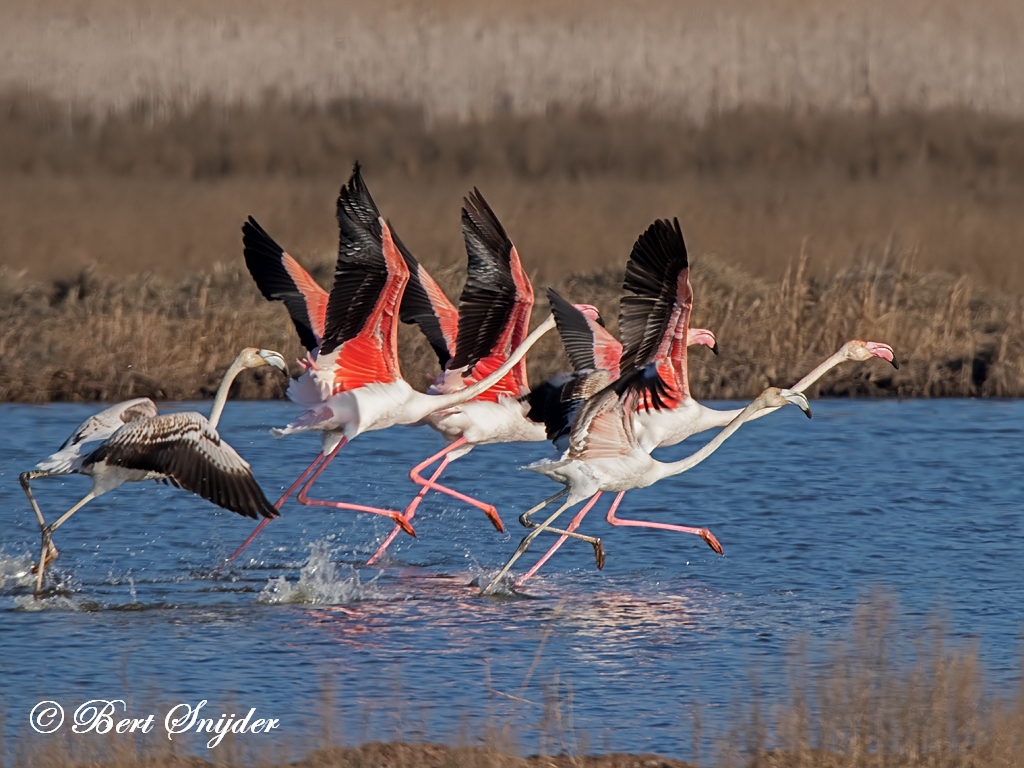
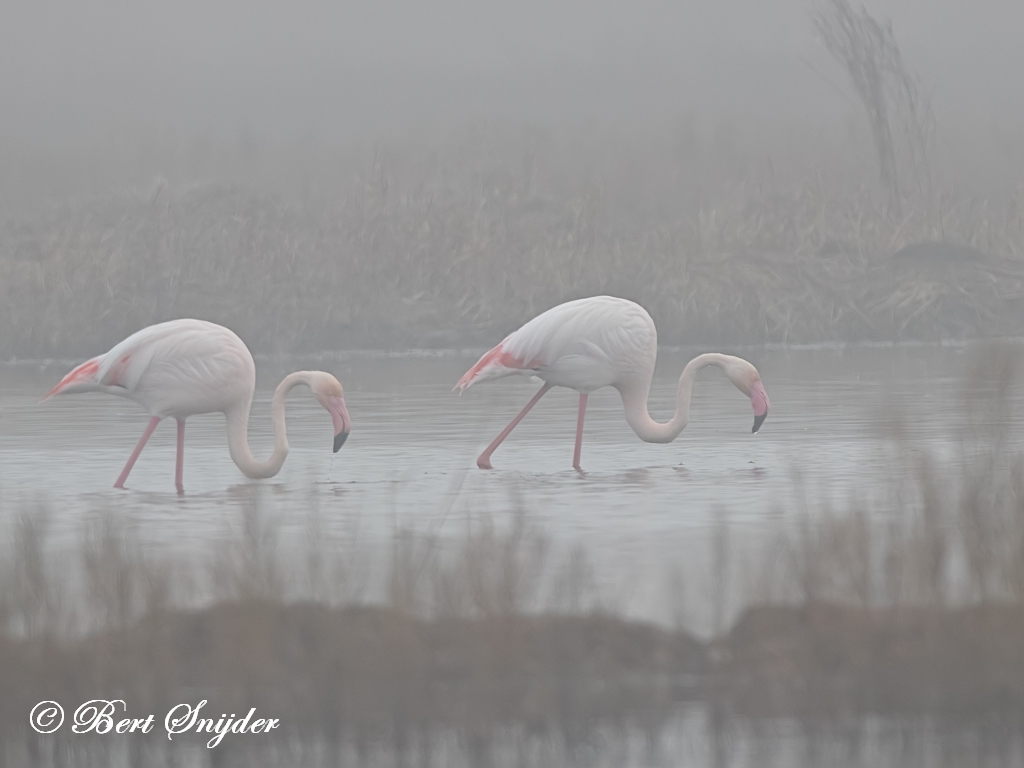
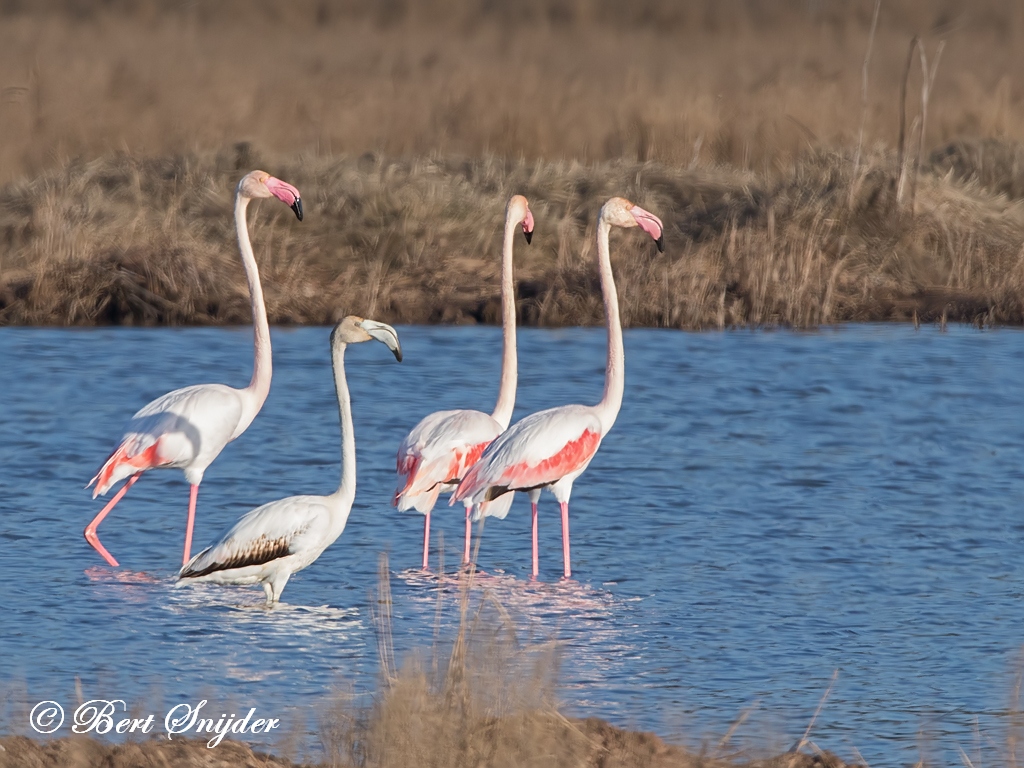
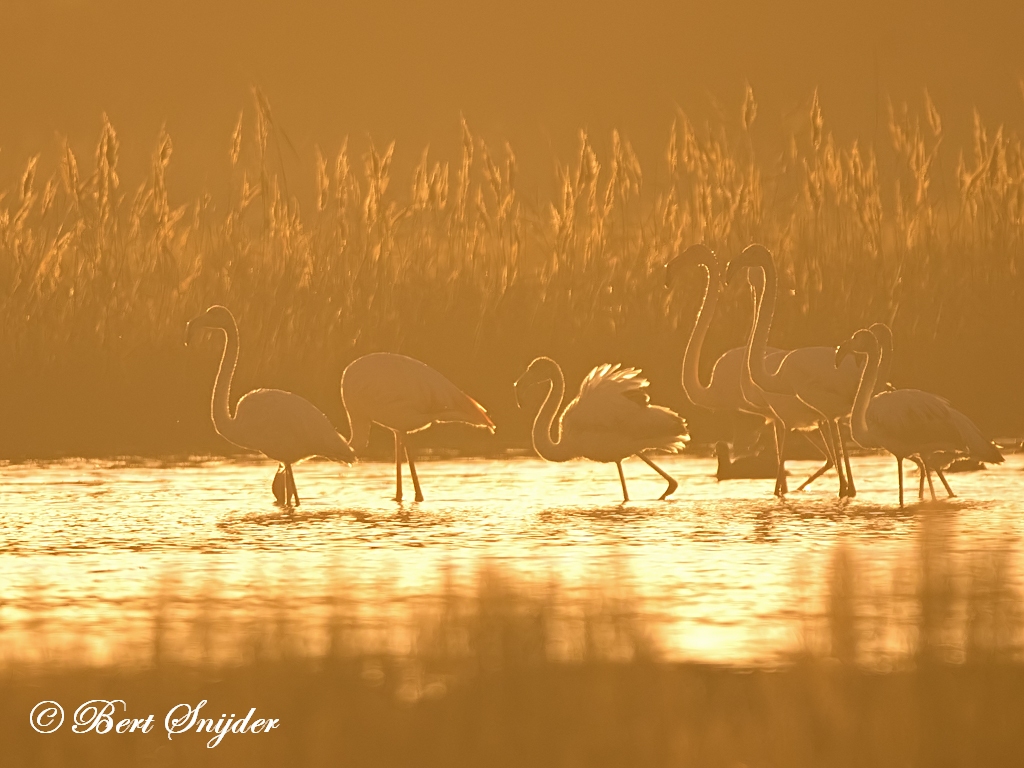
Other synonyms:
Afrikaans: Grootflamink
Azerbaijani: Adi flaminqo, Flaminqo
Catalan: Flamenc
Valencian: Flamenc
Czech: Plamenák ružový
Danish: Flamingo, Stor Flamingo
German: Flamingo, Rosaflamingo, Rosaroter Flamingo
English: Afro-asian Greater Flamingo, Eurasian Flamingo, European flamingo, Flamingo, Greater Flamingo, Rosy Flamingo
Esperanto: Flamengo
Spanish: Flamenco, Flamenco Común
Estonian: heleflamingo (flamingo)
Basque: Flamenc, Flamenko handia
Finnish: Flamingo
Faroese: Flæmingur
French: Flamant rose
Frisian: Flamingo, Grutte Flamingo
Irish: Lasairéan
Galician: Flamenc, Flamingo
Hungarian: Flamingó, Rózsás flamingó
Icelandic: Flæmingi
Italian: Fenicottero
Japanese: Beniiro-furamingo
Latin: Phoenicopterus antiquorum, Phoenicopterus roseus, Phoenicopterus ruber, Phoenicopterus ruber antiquorum, Phoenicopterus ruber roseus
Lithuanian: Didysis flamingas, Flamingas
Malagasy: Gagao, Samaky
Malay: Burung Flamingo
Dutch: Europese Flamingo, Flamingo
Norwegian: Flamingo
Polish: Czerwonak, Flaming czerwonak, flaming rózowy, Flaming czerwonak
Portuguese: Flamingo-comum, Flamingo-rosado
Romansh: Flamingo rosa
Northern Sami: Flamingo
Slovenian: plamenec
Albanian: Lejleku krahëkuq
Serbian: Flamingo
Swedish: Flamingo, Större flamingo
Swahili: Heroe Mkubwa, Heroe Mweupe
Turkish: Flamingo
Zulu: uKholwase
Travel Birdwatching Holiday Alentejo, Vacation Portugal for birders to see birds on your trip